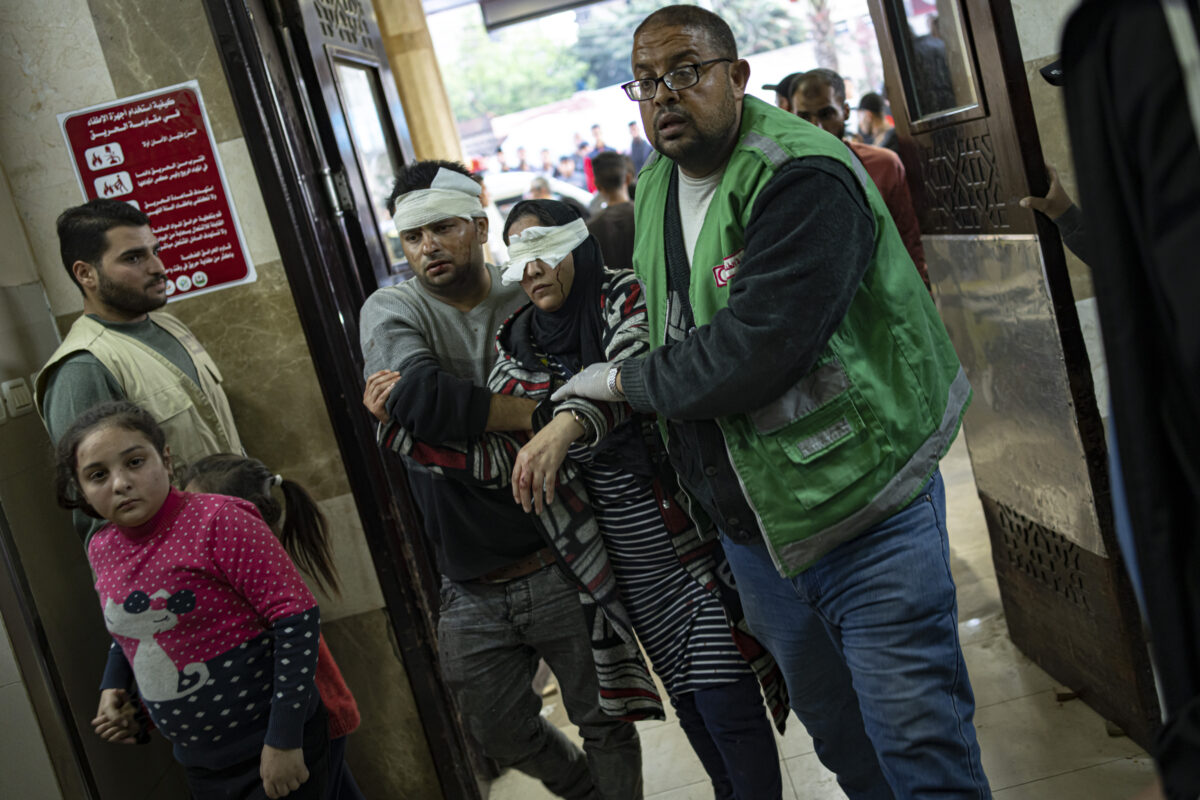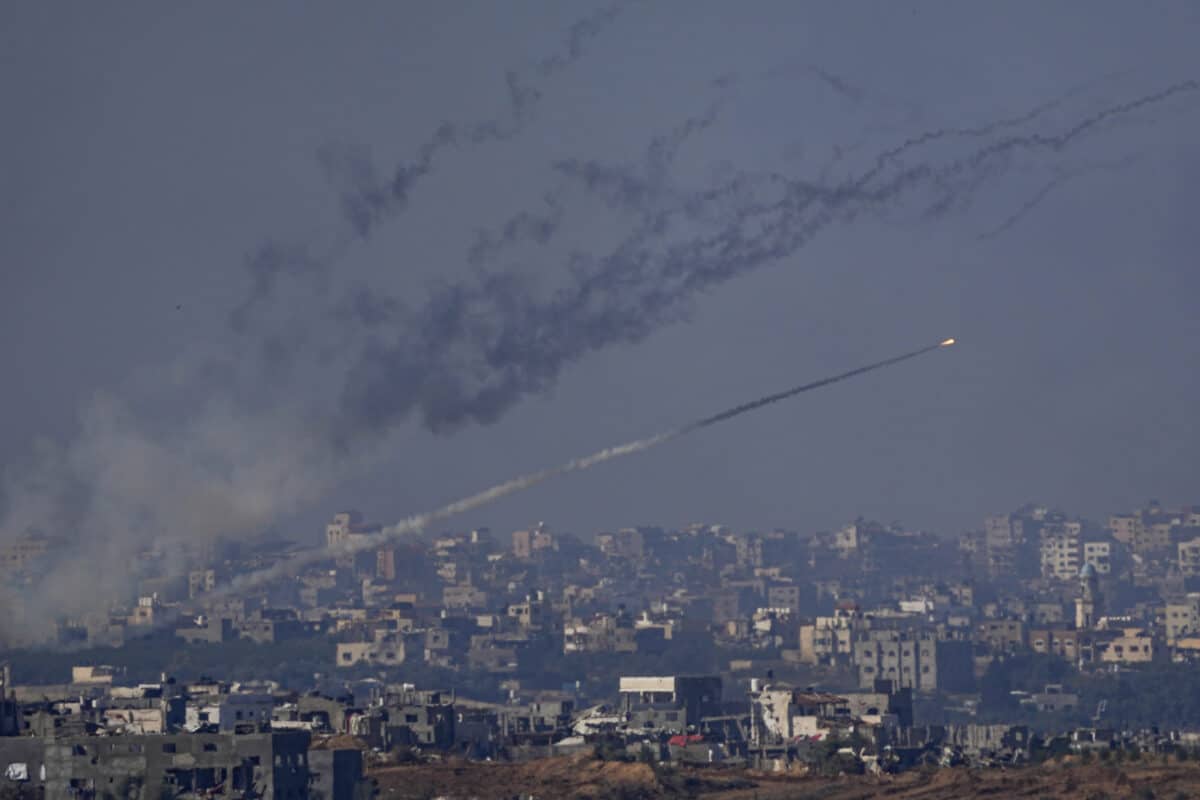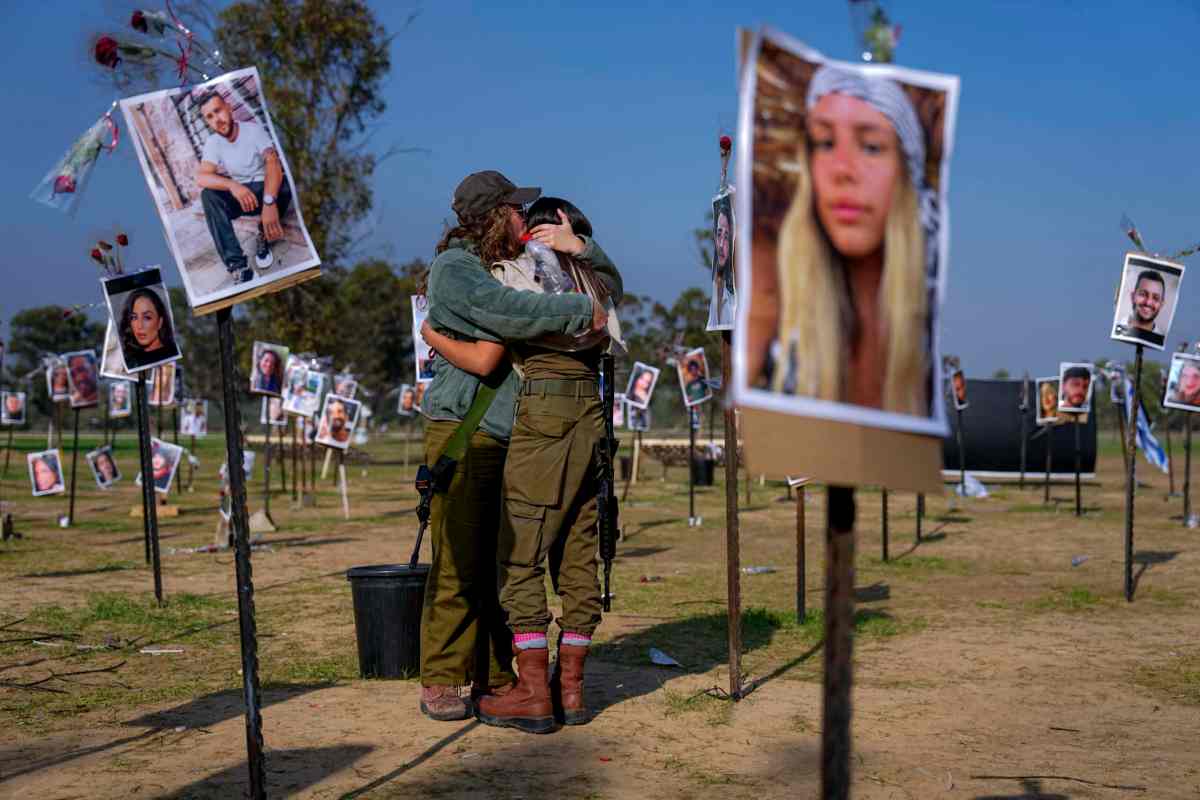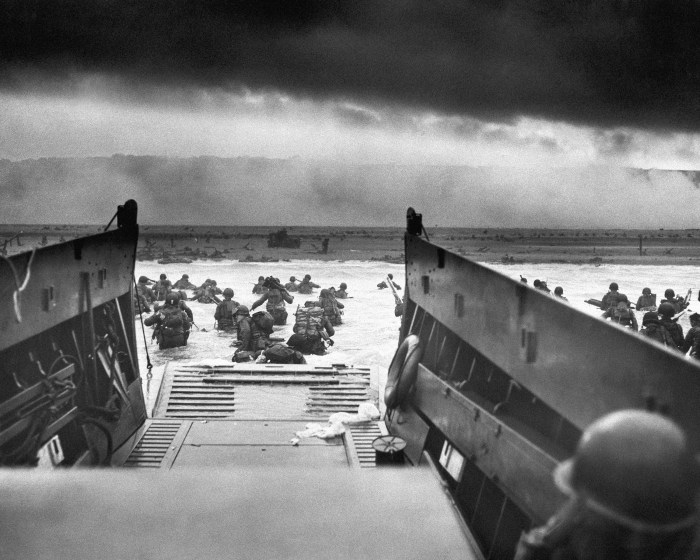Israel’s war with Hamas erupted again Friday, as airstrikes hit houses and buildings in the Gaza Strip minutes after a weeklong truce expired. Health authorities in the besieged territory reported dozens of Palestinians killed and Israel dropped leaflets over Gaza City and southern parts of the enclave, urging civilians to flee to avoid the fighting.
Militants in Gaza resumed firing rockets into Israel, and fighting broke out between Israel and Hezbollah militants operating along its northern border with Lebanon.
The resumption of the war threatens to compound the suffering in Gaza. Some 2 million people — almost its entire population — are crammed into the territory’s south, where Israel urged people to relocate at the war’s start and has since vowed to extend its ground assault. Unable to go into north Gaza or neighboring Egypt, their only escape is to move around within the 85-square-mile area (220 square kilometers).
Renewed hostilities also heighten concerns for about 140 hostages still held captive by Hamas and other militants, after more than 100 were freed during the truce. For families of remaining hostages, the truce’s collapse was a blow to hopes their loved ones could be the next out after days of seeing others freed.
Qatar, which has served as a mediator along with Egypt, said negotiators were still trying for a deal to restore the cease-fire. Israel and Hamas traded blame for ending the truce.
A day earlier, U.S. Secretary of State Antony Blinken urged Israeli officials to do more to protect Palestinian civilians as they seek to destroy Hamas. Blinken met Friday with Arab foreign ministers at global climate talks in Dubai.
It was not clear to what extent Israeli Prime Minister Benjamin Netanyahu will heed the appeals of the United States, Israel’s most important ally.
Netanyahu’s office said Friday that Israel “is committed to achieving the goals of the war,” including releasing the hostages and eliminating Hamas, which has ruled Gaza since 2007.
In response to the U.S. calls, the Israeli military released an online map dividing the Gaza Strip into hundreds of numbered, haphazardly drawn parcels. It asked residents to learn the number of their location in case of an eventual evacuation. The map did not designate safe areas to evacuate to, and it was not clear how easily Palestinians could access it.
Hours into the renewed bombardment, Gaza’s Health Ministry said 109 people were killed and dozens wounded. Israel said it struck more than 200 Hamas targets.
Since the war began, more than 13,300 Palestinians have died, roughly two-thirds of them women and minors, according to Gaza’s Health Ministry, which does not differentiate between civilians and combatants.
The toll is likely much higher, as officials have only sporadically updated the count since Nov. 11. The ministry says thousands more people are feared dead under the rubble.
The war began after the Oct. 7 attack by Hamas and other Palestinian militants, who killed about 1,200 people, mostly civilians, in southern Israel and took around 240 people captive. The New York Times reported Israel’s military was aware of Hamas’ plan to attack Israeli soil over a year before the devastating operation.
Return to battle

About an hour before the cease-fire was to expire early Friday, Israel said it intercepted a volley of rockets fired from Gaza. Minutes after it expired, the military announced a resumption of combat operations, and strikes soon began.
In leaflets dropped in southern Gaza, Israel urged people to leave homes east of Khan Younis, warning that the southern town was now a “dangerous battle zone.” Other leaflets warned residents of several neighborhoods in Gaza City in the north to move south.
Hundreds of thousands of people fled northern Gaza to Khan Younis and other parts of the south earlier in the war, part of an extraordinary mass exodus that has left three-quarters of the population displaced and facing widespread shortages of food, water and other supplies.
The International Rescue Committee, an aid group operating in Gaza, warned the return of fighting will “wipe out even the minimal relief” provided by the truce and “prove catastrophic for Palestinian civilians.”
Strikes in Khan Younis hit an apartment in a housing development and destroyed a large building. Residents frantically searched the building’s rubble for survivors, and several wounded children were brought to a nearby hospital.
“We are women and children here. We have nothing,” said Fatima Nshasi, a relative of a family in the building, as women sobbed nearby. “We were going with life as usual, hoping the truce would be extended.”
Strikes also hit near Gaza City and in the central Gaza refugee camp of Maghazi, where rescuers clawed through the rubble of a large building. A foot stuck out of the tangle of concrete and wiring.
Israel says it is targeting Hamas operatives and blames civilian casualties on the militants, accusing them of operating in residential neighborhoods. Israel says 77 of its soldiers have been killed in the ground offensive in northern Gaza. It claims to have killed thousands of militants, without providing evidence.
Hamas’ armed wing said it fired volleys of rockets from Gaza toward Israeli cities. White smoke trails could be seen over the Israeli town of Sderot on the border with northern Gaza after Israel’s missile protection systems activated.
In Lebanon, Hezbollah said Friday its fighters fired on a group of Israeli soldiers along the border, its first attack since the truce went into effect. It was not immediately clear if there were casualties.
Israel said a number of launches from Lebanon targeted military posts near the border, and others were directed toward the town of Kiryat Shmona but were intercepted. The military responded with artillery. One Hezbollah fighter and his mother were killed when their home was hit, security officials said.
Hostages’ families grieve

The end of the truce hit families of the remaining hostages especially hard.
Meirav Svirsky told Israel’s Channel 12 that a released hostage relayed a message to her from her 38-year-old brother, Itai, who is still held hostage, confirming he is alive. “His body is healthy but his mental state isn’t great,” she said. Meirav and Itai’s parents were killed on Oct. 7.
“They haven’t spoken about releasing the men, and they returned to fighting without exhausting the possibilities,” said Meirav, adding that she thinks “the state is responsible” for the fate of her brother. “From my perspective, every day when there is fighting in Gaza is putting him at risk.”
Netanyahu has been under intense pressure from families of the hostages to bring them home. But his far-right governing partners have also pushed him to continue the war until Hamas is destroyed.
Netanyahu said Hamas had violated the terms of the truce. “It has not met its obligation to release all of the women hostages today and has launched rockets at Israeli citizens,” he said in a statement.
Hamas blamed Israel, saying it had rejected all offers Hamas made to release more hostages and bodies of the dead. Senior Hamas official Osama Hamdan told The Associated Press in Beirut that Hamas rejected an Israeli list of 10 female hostages to release because they were soldiers seized at military posts.
Hamas was expected to set a higher price for releasing Israeli soldiers and male hostages, and negotiations for an extension grew tougher with few women and children hostages remaining in Gaza.
During the truce, which began Nov. 24, Hamas and other militants in Gaza released more than 100 hostages — 81 Israelis and 24 from other nationalities, mainly Thais. Israel freed 240 Palestinians from its prisons. Virtually all from both sides were women and children.





































